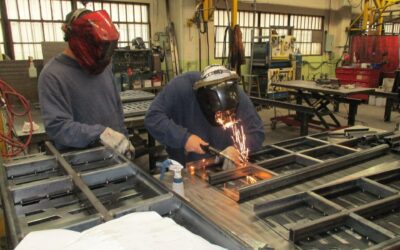The bad news: there is an invisible problem hurting most manufacturing companies.
The good news: with dedication, you can identify and solve this hidden issue.
Read on to discover how to identify wastes as described in lean manufacturing, and unlock the unique skills and abilities of all your employees.
First, an important question:
What is lean manufacturing?
“the systematic and relentless elimination of waste in all its forms in the pursuit of the best quality, lowest cost, shortest lead time, best safety, and highest morale.”
Let’s stop and take that apart.
Build waste elimination into business processes
Systematic and relentless elimination of waste implies that getting rid of waste will be a regular ongoing process baked into business as usual, not something you start when things get bad or when work is slow. It must be ongoing and consistent to deliver value.
What are considered ‘wastes’ in Lean Manufacturing?
In lean manufacturing wastes are:
- overproduction
- excess inventory
- excess transportation
- excess motion
- defects
- over-processing
- waiting
- underutilized talent
How do you identify wastes in manufacturing?
Based on the definition above, to be a productive and effective manufacturing company we need to be able to SEE these wastes and work together to STOP them from happening. Some wastes are visible and easy to understand, like overproduction (spending too long on processes your customer is not willing to pay for) or excess inventory (too much product). Here are some clues that our staff look for when they visit manufacturers.
What do consultants look for to identify waste in manufacturing businesses?
- Too much WIP
- Messy work areas
- Variation in daily output
- Chaotic flow
- Little or no Visual management
- Lack of communication – people constantly asking what they need to do next
What about the wastes that are not as visible? How do you find wastes you can’t see with your eyes?
When it comes to the invisible wastes, pay attention to your people. The wastes of waiting and underutilized talent are harder to see with your eye, but they can often be felt.
Invisible but deadly, underutilized talent is not drawing on people’s knowledge and innate creativity in the workplace.
Each element of waste includes people at the center, but the true heart of continuous improvement is in the waste of underutilized talent. Nothing is more tragic, or more preventable than an under-utilized human.
What does underutilized talent look or feel like?
- Feeling unheard
- Having ideas for improvement or change but having nowhere to share them or believing they will be dismissed without consideration
- Receiving negative feedback on employee surveys
- Crossed arms, sighs, frustration – general lack of willingness to change (afraid of flavor of the month programs)
If we can focus on eliminating these people-centric wastes, we can build a powerful force to help with the other more obvious forms of waste.
As manufacturing business leaders, we want to respect everyone’s humanity. Our ability to think and feel make us human. These may feel like soft topics for metrics and outcome-driven organizations, but to build successful businesses we have to respect humanity in the way we design the work so that the work enables beautiful human characteristics to flourish.
What can you do to empower and engage your people? How can you design work to bring the most out of your staff so they flourish?
- Solicit feedback
- Do something about the feedback you get, and welcome feedback even if it is negative
- Engage people’s creativity and imaginations
- Help people connect their daily work to your company’s overall goals
- Reward good work and explain why it is good
- Communicate expectations and give clear feedback
- Provide career paths for growth – show your employees what skills or knowledge they need to train in to move to a new level in your company
- Go to the Gemba daily – see where the work happens (physically walking in the space where work takes place) and make continuous improvement plans daily
- Make your targets and goals visual so your team can understand what a ‘win’ looks like
- Carve out time weekly for your team to meet and creatively collaborate to solve problems
- Ask open-ended questions when engaging your employees
- Create trust and provide a safe environment for communication
- Win together by working on continuous improvement. Help them to see the issues that surround them.
- Celebrate successes
Some questions our consultants ask to help companies build people-oriented businesses
- How are you working to eliminate hidden wastes?
- When did you last ask your employees how they feel about work?
- What is your target condition? What is your current condition?
- What obstacles are getting in your way?
- What can we work on together to help improve our work center?
By focusing on people first, you will build a thriving manufacturing business that will stand the test of time.



